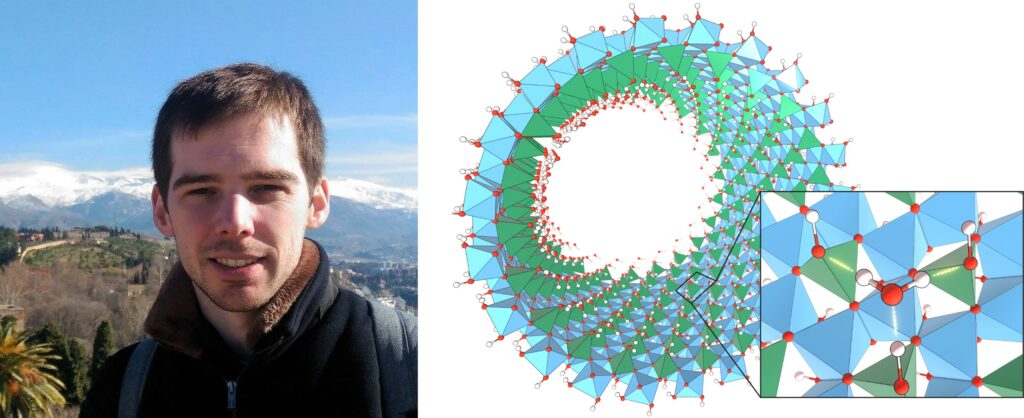The study of ultra-confined fluids opens a very large field concerning nano-flows and it highlights the determining role of interfaces in new structures of liquids such as water. The development of nanofluidics opens interesting perspectives in what is called “blue energy”, but also in the fields of catalysis and ultra-filtration.
Geoffrey Monet received the 2021 thesis award from the Société Française de la Neutronique (SFN) for his work on confined water. His thesis was carried out at the Laboratoire de Physique des Solides (LPS) at Orsay, under the supervision of Pascale Launois, co-supervised at the LPS by Erwan Paineau and at the Institut Laue Langevin (Grenoble) by Stéphane Rols. Geoffrey studied the structure and temperature transformation of geo-inspired nanotubes, the synthetic imogolite nanotubes, and their properties as nanocontainers. These particular clay nanotubes exist in the form of single or double walled tubes. With well-defined diameters and tunable chemical affinity to water, imogolite nanotubes are ideal platforms to study novel properties of molecules confined at the nanoscale.
The atomic structure of imogolite nanotubes had not been determined quantitatively. The thesis proposes a new methodology to determine the atomic structure of such nanotubes based on X-ray scattering experiments performed at the LPS and the SOLEIL synchrotron [1]. The knowledge of the structure of the nanocontainer proved to be fundamental to study the properties of nano-confined water.
An important part of Geoffrey’s thesis is the study of water confinement in hydrophilic single walled imogolite nanotubes [2]. Inelastic neutron scattering experiments performed on several spectrometers at ILL have been analyzed in the light of molecular dynamics simulations (collaboration with G. Teobaldi, STFC, UK). An original method of visualization and attribution of vibrational modes is proposed. This approach has allowed to highlight a novel organization of water in nanotubes. Indeed, the water molecules are isolated from each other, absorbed on the internal surface of the nanotubes in sites perfectly sized to accommodate a molecule (Figure). This proximity induces a strong coupling in the dynamics of the water molecules and the nanotube.

Figure. Single-walled imogolite nanotube: the O3Al(OH) octahedra in blue are arranged on a honeycomb lattice and the O3GeOH tetrahedra (in green) are placed on the cavities of the octahedra lattice. The hydrogen and oxygen atoms are represented in white and red, respectively. Inset: zoom on the position of a water molecule absorbed on the inner surface of the tube.
References
[1] G. Monet, M. S. Amara, S. Rouzière, E. Paineau, Z. Chai, J. D. Elliott, E. Poli, L.-M. Liu, G. Teobaldi and P. Launois, Structural resolution of inorganic nanotubes with complex stoichiometry, Nature Communications 9, 2033 (2018)
[2] G. Monet, E. Paineau, Z. Chai, M.S. Amara, A. Orecchini, M. Jimenéz-Ruiz, A. Ruiz-Caridad, L. Fine, S. Rouzière, L.-M. Liu, G. Teobaldi, S. Rols and P. Launois, Solid wetting-layers in inorganic nano-reactors: the water in imogolite nanotube case, Nanoscale Advance 2, 1869 (2020)
PhD thesis: « Nanotubes géo-inspirés : structure atomique, transformation en température et dynamiques corrélées nanotube-eau moléculaire » by Geoffrey Monet.
